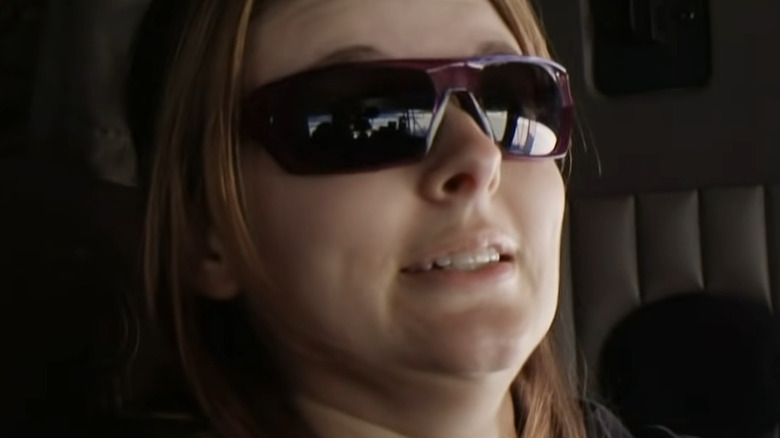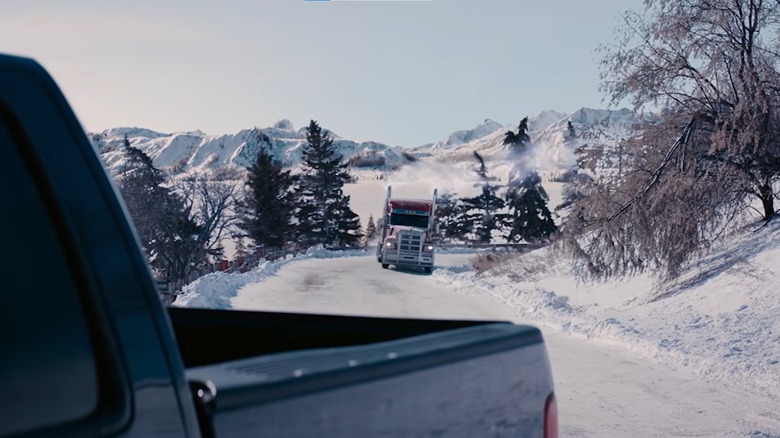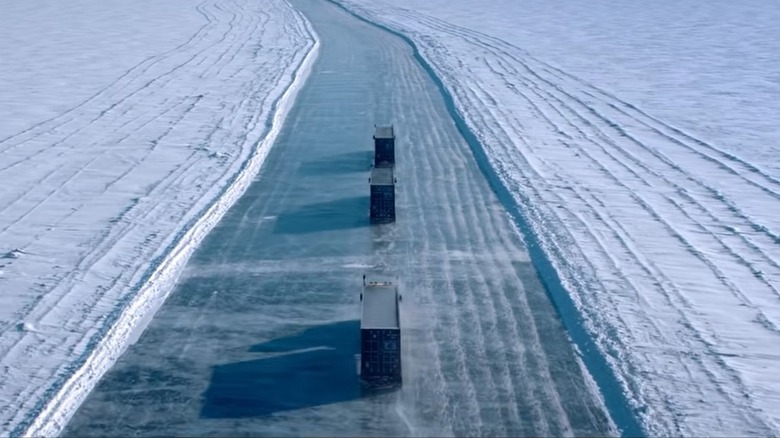Ice Road Truckers Todd And Lisa Reveal How Accurate Netflix's The Ice Road Is
Hauling parts and supplies across hundreds of miles of ice to supply Alaskan oil fields may not be a profession for everyone — but a lot of people sure do enjoy watching others do it from the comfort and warmth of their living rooms.
After 11 seasons on The History Channel, "Ice Road Truckers" called it quits in 2017, but that was after it built up a large enough following that Netflix had the idea for a movie about the adrenaline-fueled job. The direct-to-Netflix film "The Ice Road" landed on the platform in 2021 with some pretty mediocre reviews from critics — despite the big names in the cast like Liam Neeson and Laurence Fishburne. But even though critics generally weren't fans of the film, there were two people who had a chance to check out the movie and share a technical critique that not many other people in the world would be able to do.
We're talking about Todd Dewey and Lisa Kelly, two real-life truckers who have had years of experience driving on ice roads documented in the series "Ice Road Truckers." Their knowledge of the profession will give viewers a look into what "The Ice Road" got right and what it got wrong.
Netflix's The Ice Road got a lot right about the profession
You might expect that "The Ice Road" received the "Hollywood treatment" of being over-sensationalized to the point that Todd Dewey and Lisa Kelly would find it wildly inaccurate, but that just isn't true. As it turns out, Netflix got a lot right about what it is like actually to be a driver on the ice roads in Alaska. In "The Ice Road," the truckers need to cross the frozen lakes to get to trapped miners — but the catch is that it is already April, which means that the ice is starting to melt. Laurence Fishburne's character notes that crossing the ice in April is doable, but it can be deadly at the same time — a sentiment that Dewey shares when he says, "That is exactly the truth. By the time April comes around, the waters could be a foot to two feet deep on top of the ice. You don't even see the ice." He goes on to say that even though he has had to do it several times, he has never gotten comfortable with it.
There is also talk from one of the characters on "The Ice Road" about not being able to go too fast or too slow on the ice without some pretty substantial consequences. That turns out to be true as well, with both Dewey and Kelly talking about how going too fast can create pressure waves under the ice, and stopping on the ice with the vehicle idling can cause the ice to crack. The overall danger of the job is something both truckers acknowledge as the truth when it is brought up in the movie.
But The Ice Road did get some things wrong about hauling loads across the frozen lakes
Surprisingly, there was very little that Netflix got wrong about hauling tens of thousands of pounds of trailer across miles of ice, but what they did get wrong could probably cost drivers their lives in real life. What seemed to be the biggest glaring fault in "The Ice Road" is the distance between the trucks as they travel across the frozen lakes. "In the beginning of this movie, they set a 200-foot spacing between trucks. In real life, that is nowhere near enough spacing on the ice. It's way farther distance than that," Todd Dewey said in his critique of the movie. He went on to note that when trucks do break down — like one does in the movie — they will have 600 or 700-foot ropes that are used to tow the disabled vehicles.
Lisa Kelly closes her critique of the movie by saying "Hopefully my everyday life isn't quite that exciting, but some days it could be," which just goes to show that even some of the crazier moments from "The Ice Road" may not be that far from what these truckers really experience. But will Netflix's film help in reviving History Channel's "Ice Road Truckers?" That is a question that is yet to be answered.


